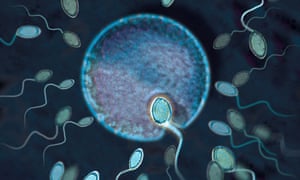When New Zealander Kathryn Heape realised the fairy tale of marriage and kids was taking its sweet time she took out an insurance policy and applied for donated sperm.
“Since I was 10 years old, I just expected to have a baby when I grew up,” she says.
“I’ve always wanted to be a mother, but the idea of going to a clinic for that never featured.”
With the encouragement of her family and friends, Heape registered with a clinic. What she didn’t realise was that the current waiting list was up to two years.

“I had no idea there was a shortage, that came as a real surprise. But it’s something out of my control, so I just tried to get on with life while I waited. I kept dating, still hoping to have a baby the traditional way.”
New Zealand is in the grip of a sperm drought, with fertility counsellors saying long waiting times are putting significant strain on already stressed prospective mothers.
“Increasingly we are hearing of New Zealand women travelling overseas for reproductive tourism,” said Dr Mary Birdsall, a fertility specialist with Fertility Associates.
“It’s a very challenging situation. It’s challenging to recruit donors, and it is tough on the women who are psychologically and biologically ready to start a family, but can’t.”
In 2004 the New Zealand government introduced legislation banning anonymous sperm donations and preventing donors from receiving any payment for their services.
Donors in New Zealand have minimal costs covered (such as travel to the clinic) but are not compensated for their time, which after rigorous medical testing and counselling, can be significant.
Under the new law, the sperm donor must also agree to being identified to any offspring when the child turns 18.
A decline in sperm donations following the introduction of the legislation coincided with a sharp rise in same-sex and single women applying for donated sperm.
Dr John Peek, general manager of Fertility Associates, New Zealand’s largest fertility clinic, said there is usually enough sperm in the country to treat about 80 families, but the number of people applying for the sperm is around four times that.
“New Zealand has had a shortage of sperm donors for a long time,” said Peek.
“I think rather than peaking it has become a continuous drought. Like climate change, it has become the new normal.”
Like climate change, [the sperm drought] has become the new normal.
Fiona McDonald, a counsellor for fertility clinic Repromed in Auckland, says the lengthy waiting list for sperm is added pressure on New Zealand women, at what should be an exciting and positive time of their lives.
“It is really hard for women whose biological clock is ticking and every month that goes past feels like an age,” she said.
“They might already be in the 40s age bracket and time is crucial. Even six months could make the difference between having a child or not.”
In 2015 Fertility Associates treated 300 women with donated sperm. Of those 35% were heterosexual couples with male infertility issues, 25% were lesbian couples and 40% were single women.
McDonald said single women now make up the largest group seeking donated sperm at Repromed – and the first process in their journey is often grief counselling.
“Some women feel a sense of shame at having to take this route to becoming a mother,” said McDonald.

“One of the first steps is grieving, that life has not turned out how you hoped. You have not found a partner and you are having to embark on this journey towards becoming a parent on your own.”
Dr Guy Gudex, medical director of Repromed, said his clinic needed to “seriously investigate” importing foreign sperm, as the drought showed no sign of abating.
While Heape was on the waiting list Repromed advised her to approach her male friends about donating – to no avail. She also investigated New Zealand websites set up to acquire sperm, but found them “a bit dodgy”.
“They’re not very professional. They can be a bit creepy even. There are men on there saying ‘I’ll help, but it has to be the old-fashioned way’. That’s not sperm donation, that’s sex.”
In 2015 the Advisory Committee on Assisted Reproductive Technology (ACART) advised the New Zealand government that foreign sperm and eggs should be allowed into New Zealand and subject to the same rules that apply to local donors.
Comparable countries like Australia and England allow the importation of foreign sperm, and demand is growing from Kiwi women that New Zealand should follow suit.
The ACART report found many New Zealand women were already travelling overseas to procure sperm, but time, cost and murky trans-border legislation meant it was not a viable option for most.
The report was delivered to the health minister at the beginning of 2015. A spokesperson from the ministry
Peek said his clinic could not explore overseas options until the minister ruled on import and export legislation, but it was “difficult not to say yes” to women who were increasingly desperate.
Heape is supportive of New Zealand allowing the importation of foreign sperm, but says New Zealand men should be better educated about donation first – and better compensated for their time if they do donate.
After a year’s wait, Heape was given the choice between two sperm donors. She was attracted to one because “he was more open to being contacted” before the child’s 18th birthday.
On her first try earlier this year, Heape fell pregnant. She says she is “tired but ecstatic”.
So far, the process has cost her NZ$ 14,000 (£6,700).
“A few people said to me ‘have a one-night stand’ when thy found out about the waiting list,” said Heape.
“But I don’t want that to be my child’s conception story. When they arrive, I want them to know they were created in the best possible way, by two consenting adults.”
New Zealand"s serious sperm shortage: "It has become a continuous drought"





